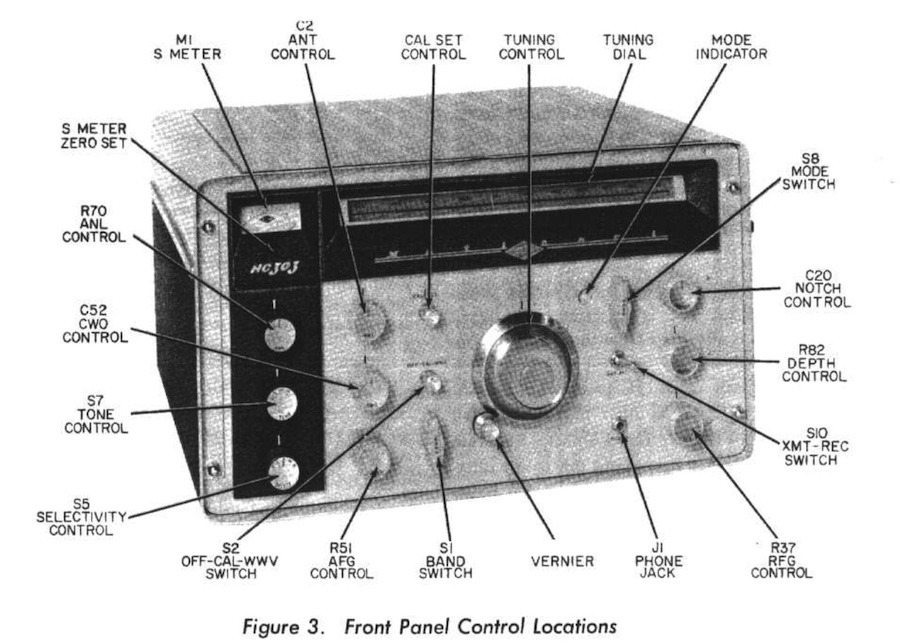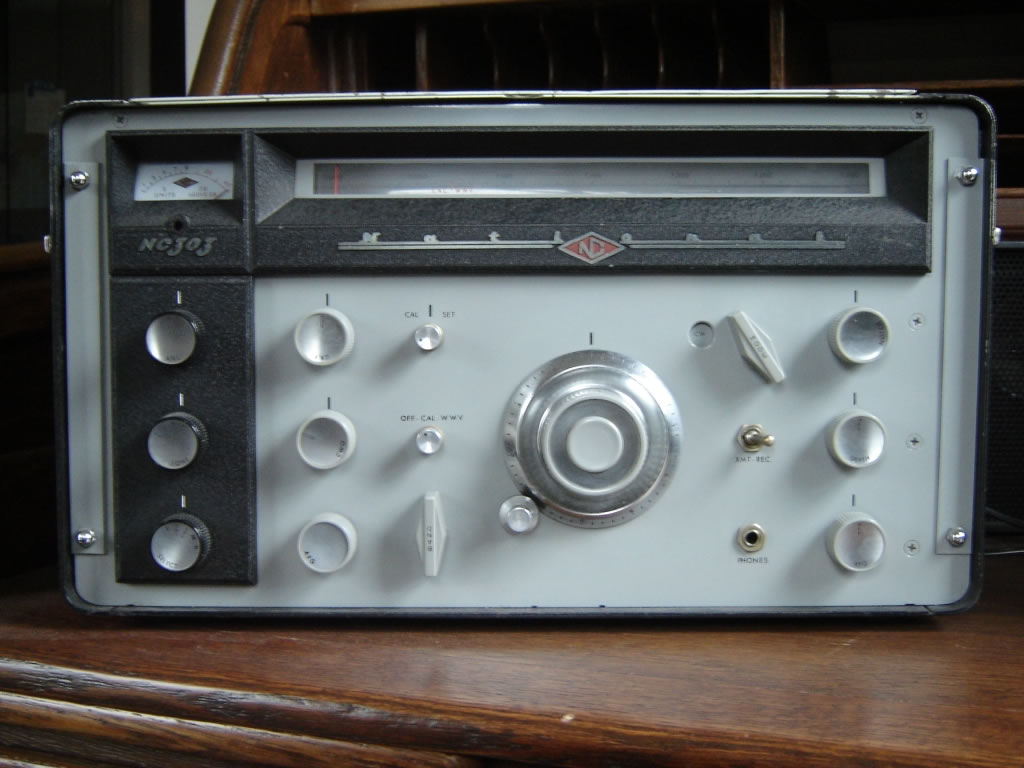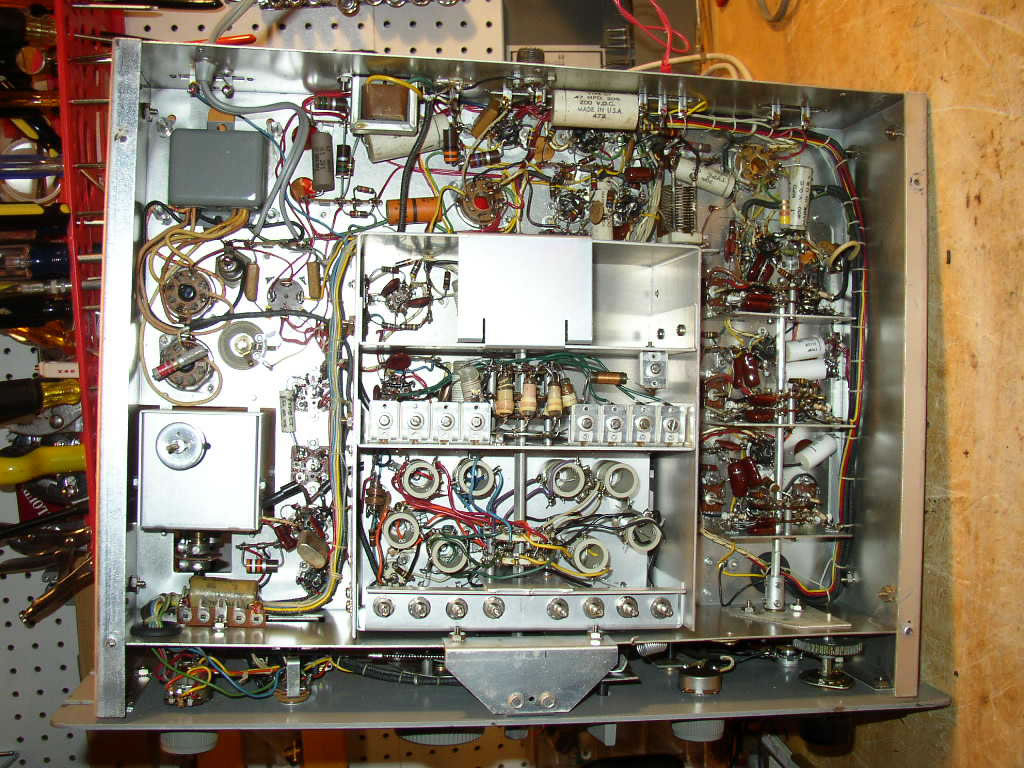My National NC303 Was Hot
Best Hobby A Young Man In The 1950's Could Have!
Knobs, Knobs, and More Knobs!

National Radio Company
The company was incorporated, in 1914, as the "National Toy Company", but by 1916 had included household appliances in their product range. This expansion led to the name change to the "National Company, Inc.". By 1923 the product line included toys, food mixers, and radio components. Radio components were to play an important part in the company's growth in the mid 1920s as they moved in to the large scale manufacture of capacitors. It was at this time that two engineers from Harvard University, Fred H. Drake and Glen Browning, approached National to manufacture components to their specifications for a radio receiver of their own design. This relationship led to the production and sale of the "National Regenaformer" kit for home construction of the Browning-Drake design. The set was capable of tuning the standard AM broadcast band only and could not achieve shortwave reception. By the early 1930s National had established a reputation with the amateur radio community based upon their line of regenerative receivers, including the SW-3 and SW-5.
In 1935 National introduced their top-of-the-line HRO receiver. This radio included two RF stages and a crystal filter. The distinctive dial allowed KC (kHz) resetability and was a National trademark into the 1960s. With few changes other than to keep up with changing tube technology, this same basic design survived for over 20 years.
In 1939, National became a key supplier to the US and Allied governments when war broke out in Europe. Military representatives from branches such as the Royal Navy visited National and ordered large numbers of receivers, particularly HRO's. When the United States entered the war some two years later, the word was, "Start building HROs; we'll tell you when to stop." National began producing for the war effort, and the number of employees went from approximately 200 to about 2500 during the war. The war effort brought increased recognition and profits to National and after the war, in the late 40s, National went public.
During the period in the 50s and 60s, National produced a wide range of amateur radio equipment which was advertised extensively in the Amateur Radio ARRL publication QST. Usually new equipment was first shown in this publication in order to initiate marketing of a new item. The company would mainly opt for the inside back cover which they believed would gain prominence for their new wares. In addition, around Christmas time each year National would produce tempting advertisements festooned with holly leaves. In 1965, National introduced the solid state HRO 500, which did not incorporate the famed HRO dial system, but instead relied on a direct readout rather than a conversion scale or chart. At the time, Popular Electronics magazine reviewed the HRO 500 as 'possibly the best amateur receiver ever'. Today, many National radios are collected, restored and operated by vintage amateur radio enthusiasts.
Through the 1970s and 1980s, National survived as a government contractor and ceased development and production of civilian equipment. However, by 1991, after continuing difficulties, the company ceased trading.

A true "boat anchor"
About The NC303
These receivers were manufactured between 1958 - 1962. It is a seven band, ham-band only dual conversion receiver with a tunable HFO. The IFs are 2215 khz and 80 khz. For a filter, it uses an 80 khz L/C and a Q-multiplier. It has AM, CW, and Sideband mode selections. It has 15 tubes.
Tube lineup: 6BZ6 RF, 6BA7 mixer, 6AH6 HFO, 6BE6 mixer 2/ xco, 2 6BJ6 if, 6AL5 det/ANL, 6BE6 product detector/BFO, 6AL5 ssb-cw noise limiter, 12AT7 af1/meter amp, 12AX7 Q-multiplier, 6AQ5 af out, 4H4-C current regulator, 0B2 voltage regulator, 5Y3 rectifier. It produces 1 watt of audio into 8 ohms.
They made a wide variety of equipment through the years.

It came from a great family
The NC-300 was extremely sensitive, and generally a real good radio for its time. It had a matching speaker, the NC-300TS, with a very cool thunderbolt "N." There was also a similar-looking case that held up to three accessory VHF convertors, for 6, 2, and (believe it or not) 220 MHz. These were switched in from the receiver, and had their own scales on the big dial. Electrically, all three downconverted to a 30 MHz top band on the main set, which served as a tunable IF.
The NC-300 was followed in 1958 by the NC-303 ($450), an improved version of the 300 which still shows up on a lot of all-time favorite lists right next to such legendary iron as the R-390, 75A-4, and SP-600! It had more filters, two different noise limiters, and a built-in Q-multiplier/ notch filter. The NC-303 lasted until the end of the boat anchor era in 1962.
I converted my receiver to solid state replacing all the tubes with semi-conductors. It worked even better than the original!

Amazing array of parts
I Remember The Advertisements Well
During the period in the 1950s and 60s, National produced a wide range of amateur radio equipment which was advertised extensively in the amateur radio ARRL publication QST.
Usually new equipment was first shown in this publication in order to initiate marketing of a new item. The company would mainly opt for the inside back cover which they believed would gain prominence for their new wares.
In addition, around Christmas time each year National would produce tempting advertisements festooned with holly leaves.
In the late 1950s, National asked the readers of QST what they wanted in a new ham radio receiver, with the result being the National NC-300 (and its successor, the NC-303).
It featured a rare 30–35 MHz input for converters for 50, 144 and 220 MHz use (220 MHz equipment was very rare at the time)